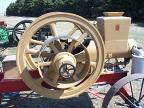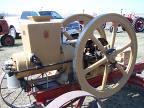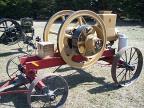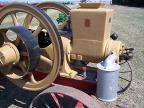





|
The Haish/Rock Island |

|
Copy write 2011, 2012, 2013 not for republication or sale without express written consent. All images are the property of their respective owners and are not to be reused without their express permission. |
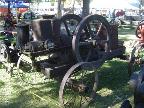
|
Below: Haish Engines. Although most are Chanticleer branded these are the same engines a Rock Island would have been with different color and badging. Thanks to Steve Barr for allowing me to use his show pictures, some are from his 2005 sandwhich show report page. |
|
2 HP |
|
4 HP See Below For Original Paint Rock Island 4hp |
|
1 1/2 HP |
|
10 HP on original trucks |
|
6 HP Rock Island wrong paint w/ original Showing through |
|
7 HP (same dimensions as 8 HP |
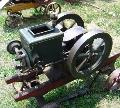
|
1 HP |
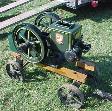
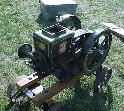
|
2 1/2 HP |
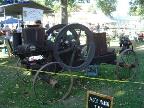
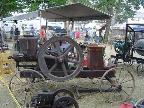
|
In October 1911 The Rock Island Plow Company acquired the “Great Western” line from Smith Mfg Co. of Chicago, which for all intents, seems to have been little more then a distributor for Haish. Besides acquiring the rights to manure spreaders, wagons and cream separators; they also obtained rights to the Jacob Haish gas engine line of the same name came with. Jacob Haish of DeKalb IL had been manufacturing engines for Smith for nearly a decade by that time as well as for the local Sandwich Mfg. Co. of Sandwich IL, the Appleton company of Batavia IL and was a respected name in the gas engine business (also was inventor of the famous “S barb” barbed wire). Although Rock Island continued to use the Great Western name on other items, the “Great Western” 2-cycle engine in Rock Islands inventory was extremely short lived by accounts and was dropped in favor of Haish’s newer “Chanticleer” line in 1912 as Haish discontinued production of the “Great Western”. This should have meant a very short marketing window for the Great Western. Apparently, some inventory of Great Westerns remained however, as in 1914 RIPC advertised Great Westerns at wholesale prices in the Farm Journal (ad below) well after the accepted end of the line. It is unknown if these were left over in Haish’s inventory, or if these were badged as Rock Islands. Rock Island did not hesitate to trade heavily on the Great Western name, advertising it prominently in their advertising. In the 1913 Rock Island Plow Company Catalog, an entire page was given over to the purchase and that RIPC would not be changing the Smith line. (below). Although the Great Western’s were built for a number of years, they are a rare line today. Currently, according to the registry at JacobHaishmfg.org, there are no known “Great Western” Rock Islands surviving. As Rock Island only sold the “Great Western” for a few months, this is not horribly surprising. It is even possible that a Rock Island Great Western would not even have been tagged with the Rock Island name. The tag to the right is often thought of as an engine tag, but was more likely used on a cream separator or manure spreader although some of the patents may apply to engines.
|
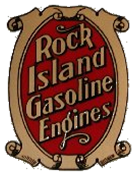
1911 Haish “Great Western” |
|
Although a prolific implement manufacturer, RIPC was not above acquiring companies it felt would be useful to its product line. The Smith Manufacturing Company of Chicago was a major innovator in the manure spreader market and had a highly reputable cream separator as well as other products like their litter carrier. Along with the implements and separators, Smith had marketed the “Great Western” gas engine and with it came Rock Islands first foray into the power farming age. Jeff Marshall has an excellent page devoted to Haish Mfg. at www.jacobhaishmfg.org. When Rock Island took over Smith Mfg., they had already been acting as agents for the Root & Vandervoort company of Moline IL so were not entirely new to the engine market. R&V also had extensive ties with John Deere, so it was certainly economical to obtain a new favorable contract with their own badging. John Deere also heavily increased its demand for engines as its branch houses expanded into the engine market, so R&V may simply not been able to handle two major customers. It is also entirely possible, John Deere as the senior customer, did not like Rock Island sharing its product line and issued an ultimatum. |
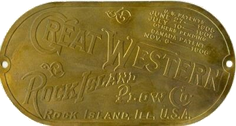
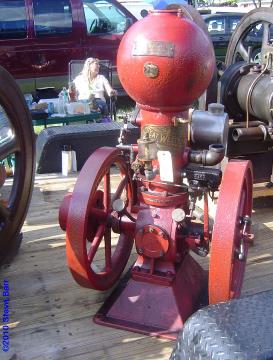
|
Below: This 2HP Great Western is a Smith Mfg, but would have been the same as the rebadged Rock Island. |
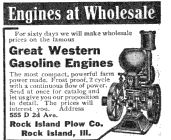
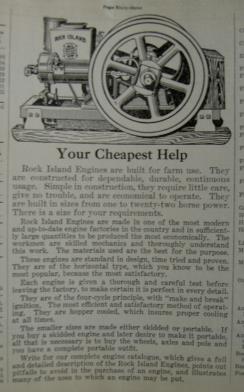
|
The newer Chanticleer engines were sold in varieties of 1, 1 1/2, 2, 2 1/2, 4, 6, 8, 10, 12, 14, 16, 18 and 22 HP, but it is unclear how many of the largest sizes were actually sold through Rock Island. A chart with HP ratings and details can be found on JacobHaishMfg.com. The “Chanticleer” name and rooster logo were dropped from the Rock Islands and a new tag and logo were added. According to Jeff Marshall of JacobHaishMfg.org; of the Haish Rock Islands he’s seen, two were painted grey while the others were painted the customary brown. A 1hp was recently sold with all original paint showing brown with black pin striping, Our 4 and 6 hp’s that we recently acquired a similar brown with black pin striping. I believe the standard Rock Island color listed, is not the correct color for a Haish engine. Of the Chanticleer style engines, a few Rock Islands still survive. A much larger number of engines sold through Haish, Sandwich and Appleton survive, with Appleton being the most common apparently. Considering many engines have been found incomplete and without their tags, it is certainly possible there were many more unknown survivors as Rock Island had distribution capacity to be a major seller. To add to the confusion, according to The chart, Haish engines with the same dimensions but different RPM’s and HP were marketed before and after 1912, leading to why most Rock Islands fall into even HP ratings. Currently according to www.jacobhaishmfg.org, the largest known surviving Rock Island/Haish engines are of the 6HP rating (only one of the three listed as Rock Islands appears to be complete, but non running; which we acquired recently), and the largest surviving Haish in general is a 10 hp Appleton. In 1914, Haish suffered a major fire, which may have impacted his relationship with RIPC. In 1914 Rock Island had apparently dropped the Haish line in favor of the Alamo line, although some sources indicate that Rock Island may have still sold Haish engines into 1916. By 1917 Jacob Haish had sold the engine line to Appleton. There is some confusion on just how close a role Appleton played, as they also appeared to have been manufacturing their own clone. An interesting notice appears in Industrial World June 1 1914 however, stating that due to the fire, The manufacturing facilities at Haish’s Dekalb plant would be move to Rock Island, including the gas engine manufacturing. Apparently, this fell through. Few details are mentioned about the exact parting of ways by Haish and RIPC, but it seems likely Jacob was finally looking to retire at the age of 88 and perhaps was looking for a better deal then RIPC was offering. By that time, it appears Appleton was already taking a significant role in engine production and may have edged Rock Island out on a deal. Haish would sell the engine company in 1917 to Appleton. Jacob would die just eighteen days short of his 100th birthday on march 9th 1926. Steve Barr’s 6 HP Appleton can be seen in operation on youtube HERE A 2HP early Great Western and a couple of Chanticleers and Appletons of various sizes can be seen running HERE
|
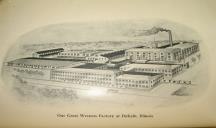
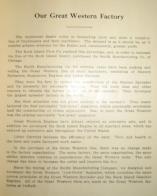
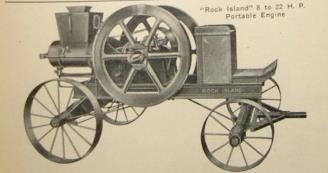
|
Click for the section of the 1913 Rock Island Plow Company catalog section covering their Hit and Miss Gas Engine Line. |
|
Below: Two original condition Haish engines, on left a 1 HP sold at auction 2011, on Right 4 HP Both show excellent original features and are on original carts. |
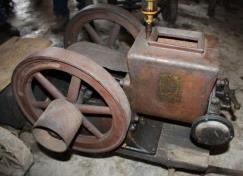
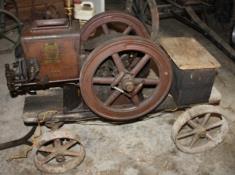
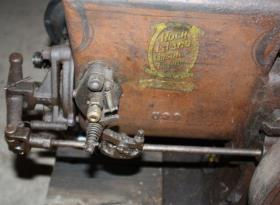
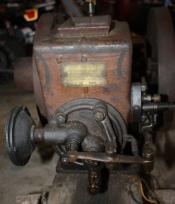
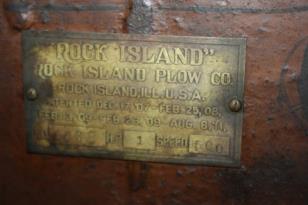
1912-1914 Haish “Chanticleer” style |
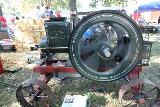

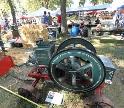
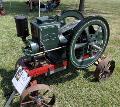
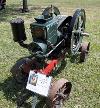
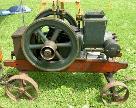
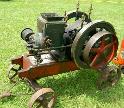


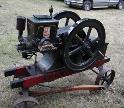
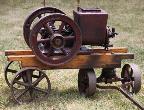
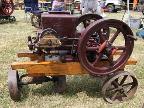
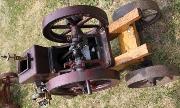
|
Below: Farm Journal Nov. 1914 Great Western Ad. |
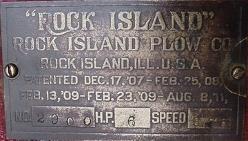
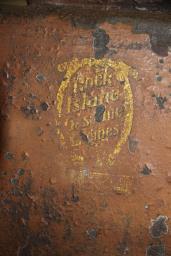
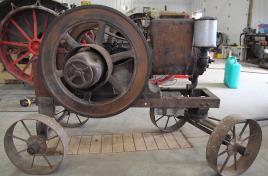
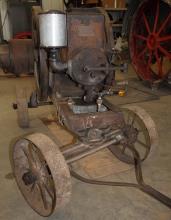
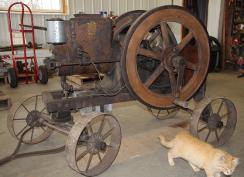
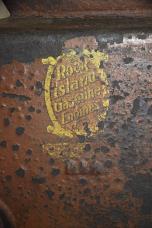
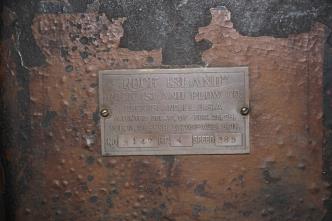
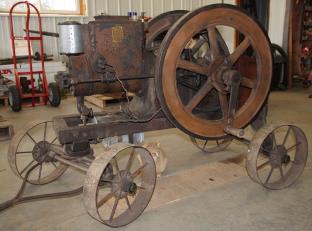
|
Below: 4HP original paint and cart (more pictures below) |
